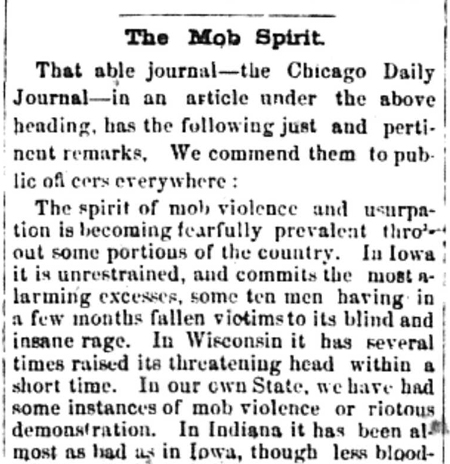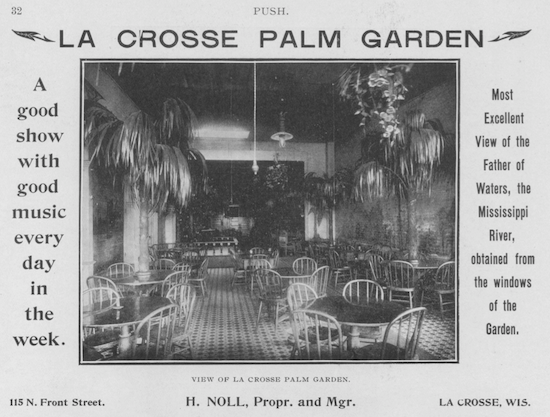
Vigilantes in La Crosse
(written by Jenny DeRocher, Archives Staff)
In 1856, most of the U.S. population was clustered on the east coast. Minnesota was not yet a state, so pioneer Wisconsin towns along the Mississippi River were considered the western border of the country. La Crosse even sported the name “The Gateway City” for a time, as the last city on the railroad before crossing into the Great American West. For folks out east, La Crosse was the Great West.
Compared to cities like Philadelphia, Boston, and New York, new western communities like La Crosse were in their infancy when it came to their local government infrastructure. And this played out in meaningful ways. In the 1850s, groups that called themselves Vigilance Committees were normalized as a response to what they saw as a lack of police authority in their growing western towns.
When La Crosse incorporated in 1856, there was no organized police department; there was a marshal, a constable, and an officer. At the time, the population was just under 2000 people, and it was growing rapidly. La Crosse was a notoriously wild Mississippi River town. The community served as a rail center, a major lumber town, and a natural stop for the shipping industry.
A majority of the travelers passing through La Crosse had no connection to the community. This demographic was largely men and they visited brothels, restaurants, and taverns, which were all conveniently located along the riverside, footsteps away from the Milwaukee Road passenger depot at 2nd and Vine Streets and the steamboat landing.
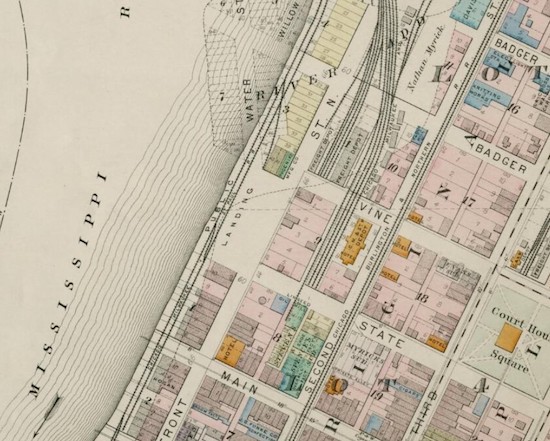
1898 City Atlas, page 15
These men were considered ruffians by the general population of La Crosse. One restaurant, the Palm Garden, even had two entrances with a barricade down the middle of the building: one side for the river traffic, one side for the townspeople. This was symbolic for the great divide between the transient population and the residents.
Community members blamed the transient demographic for the majority of criminal and “immoral” activities in La Crosse, though evidence shows that townspeople were not always innocent themselves. In the summer of 1857, this tension erupted. A group of La Crosse citizens were frustrated with “reckless behaviors” and “undesirable characters,” and they took matters into their own hands. This group called themselves the La Crosse Committee On Vigilance, and called for “villains, pickpockets, drunkards, whoremasters, ladies of ill-fame, thieves, blacklegs, and rowdies,” to leave La Crosse “or face series consequences.”
Some residents supported the vigilantes, others considered them a mob. The La Crosse newspapers were split: the La Crosse Daily Republican reprinted this article, published in the Prairie du Chien Courier, recounting the events of July 6, 1857:
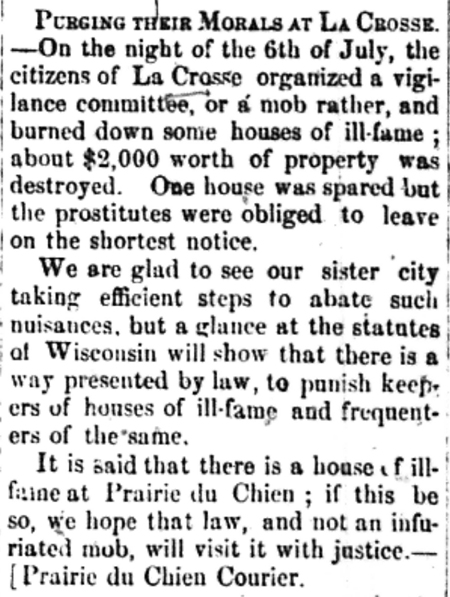
Printed in the La Crosse Republican July 22, 1857
Some wholeheartedly supported the Vigilance Committee, viewing them as the only force keeping the community safe and citing members as "some of the most respectable members of society in La Crosse." Others, however, called for members in the mob to be arrested and fined for their participation in property damage, no matter what their role was in the community. This side questioned why the vigilantes have the privilege of ignoring the law and our country’s well-established justice system.
Within two months after this incident, the City of La Crosse passed an ordinance that called for “Any person who shall make use of any vulgar or obscene....[or] loud, boisterous or insulting language tending to excite a breach of the peace....or shall be guilty of any other improper or disorderly conduct,” to pay a fine of $1-$100 (Section 1). It also said that anyone resisting arrest would pay a fine of $5-$100 (Section 2) and that people within the city had the duty “to promply aid and assist [police officers] in the discharge of [their] duties,” or pay a fine of $0-$100 (Section 3).
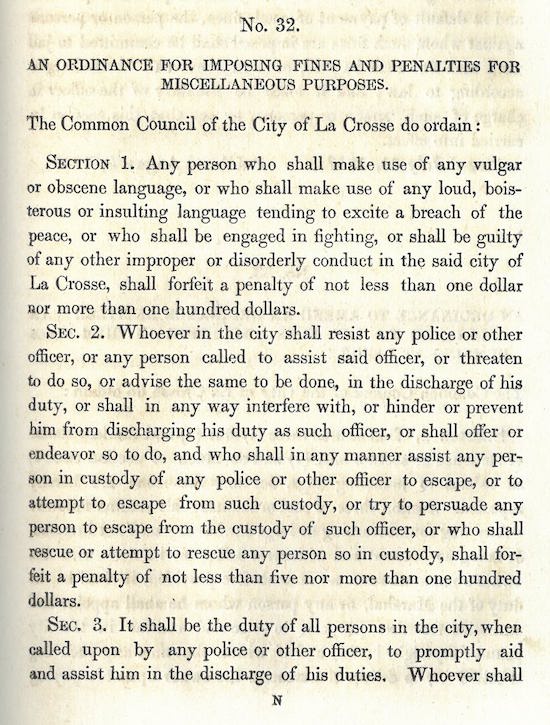
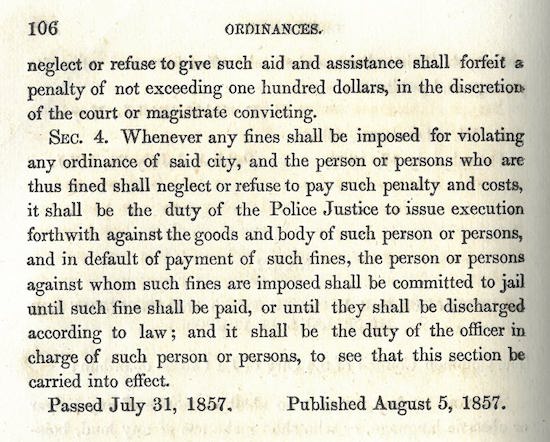
The Charter and Ordinances of the City of La Crosse, pages 105-106
On July 7, 1857—the day after the La Crosse Committee On Vigilance burned down a handful of brothels—the City amended Ordinance No 7, titled “An Ordinance Concerning Offenses in the Nature of Misdemeanors,” to read:
“Section 6. If any person or persons shall keep a....house of ill-fame, such person shall pay a penalty of $25 for every additional 24 hours during which such person or persons shall continue to keep the same being duly notified to abate the same such first conviction under this section.” The amendment also declared, “it is hereby expressly made the duty of the City Marshal upon receiving a complaint against any person or persons, from a responsible source, to proceed at once to give such person or persons notice to remove all cause of complaint.”

The Charter and Ordinances of the City of La Crosse, page 109
Considering the Mayor and the Marshal reportedly watched the events unfold on July 6, 1857 without the ability to take control of the violent rioters, it seems that this amendment could be their attempt to appease some of the concerns of the Vigilance Committee members. However, the Common Council did publish an article in the newspaper within a week calling for information for the conviction of people guilty of setting the fires the night of the riot.
After August, the La Crosse Committee On Vigilance seems to have disbanded, or at least their “Mob Spirit” had calmed, despite the fact that La Crosse's Red Light District would become one of the most famous in the state.
To read more about La Crosse's Vigilance Committee, use NewspaperArchive to search newspapers in 1857, or contact the Archives by phone at (608) 789-7136 or by email at archives@lacrosselibrary.org.

